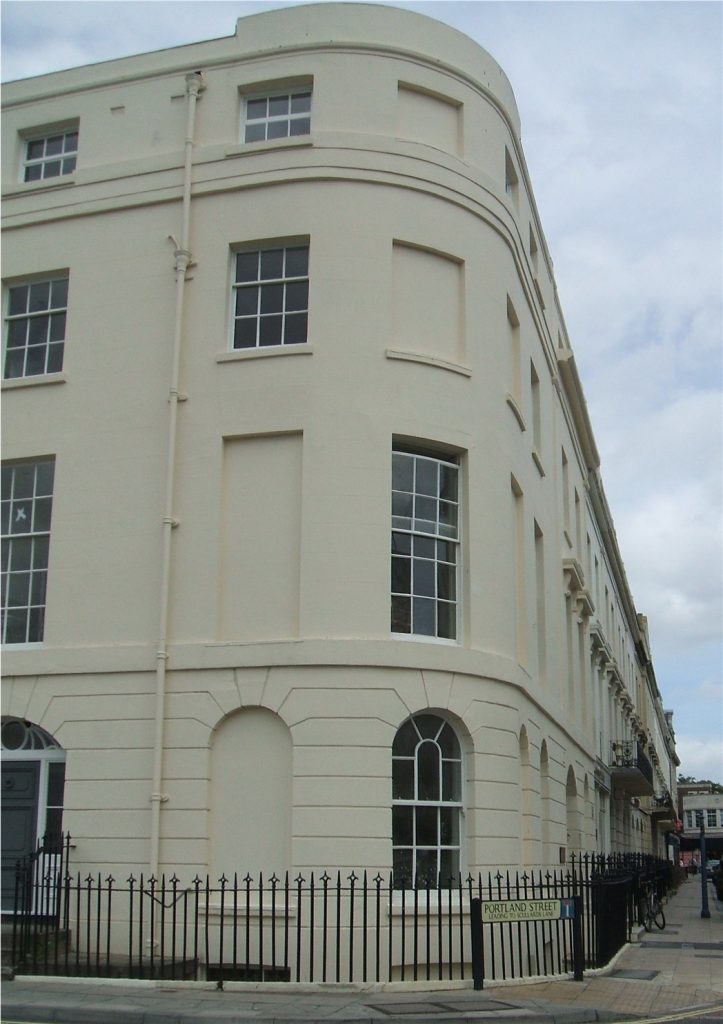Why These Windows Don’t Have Windows


Pictured above is a building from Southampton, England. It has a lot of windows — there are seven (plus the front door) visible in the image above. But it could have had more. There are clearly spots for at least four more windows but instead of glass, there are bricks or plaster or whatever the walls are made of. And if you look carefully, it seems that at least two more of the would-be windows around the corner are similarly bricked up.
Don’t blame the architect for the odd design, though. Blame creative thieves called coin clippers and English King William III.
For centuries, coins were made from precious metals — silver, gold, etc. — and like coins today could be used to buy goods and services. Coin clipping, as discussed in these pages previously, was a way for a person to both capture the value of those precious metals while also retaining the fiat value of the coins themselves. Basically, you’d shave off a bit of the edge, collecting a small amount of silver or gold for your trouble; then, you’d use the coin in commerce or to pay down debts otherwise. This act was prevalent in England well through the 1600s, and by the 1690s, the lost value from clipped coins had impacted the national treasury. England needed more revenue and in 1696, King William III came up with a tax to make up the difference.
Like most leaders, William wanted to create a taxing system which hit rich citizens harder than their poorer counterparts. The richer you were, the idea went, the bigger your home, and therefore, the more windows you had. And it was really easy for the taxing authorities to count your windows — all they had to do was walk by your house. So King William III instituted a levy on your windows. As Parliament’s official website explains, “it was intended to be a progressive tax in that houses with a smaller number of windows, initially ten, were subject to a 2 shilling house tax but exempt from the window tax. Houses with more than ten windows were liable for additional taxes which increased in line with the number of windows.” In effect, the least-windowed houses paid about $18 (in 2019 dollars), houses with more than ten but no more than 20 windows paid $35, and those with more than 20 paid a bit more than $70.
The tax had a problem from the get-go, as the urban poor typically lived in multi-family tenements — buildings like the one pictured above. Despite the fact that these buildings had many different families living under one roof, the taxing authority treated them as one building and applied the graduated rate. Landlords could pass down some of that cost to their tenants but were ultimately responsible for paying the tax. So the solution they came up with was to brick over the window openings in order to get rid of enough windows to get under the 10- and 20-window caps.
This practice remained throughout the lifespan of King William III’s window tax — a lifespan which far surpassed that of the king himself. (Governments aren’t fond of giving up revenue streams, after all.) He died in 1702; the tax, though, was not repealed until 1851 “after campaigners branded it a ‘tax on health’ and ‘tax on light and air,’” per the Telegram. Many of the buildings with bricked-over windows, though, have kept those openings covered over to this day. `
Bonus fact: Early in the Revolutionary War, John Adams and Benjamin Franklin traveled from Philadelphia to Staten Island to negotiate a peace agreement with British Admiral Richard Howe. On the way, the pair stopped off for the night in New Jersey and had to share a bedroom due to a lack of lodging. According to Mental Floss, they didn’t sleep all that well — the two couldn’t decide whether to keep the window open or closed. Adams was “an invalid and afraid of the air in the night” who insisted on it being kept closed; Franklin believed that “cool, fresh air at night [ . . . ] had many benefits.” After a few rounds back and forth, Adams capitulated.
From the Archives: Why (Some Coins) Have Ridges: Coin clipping!
